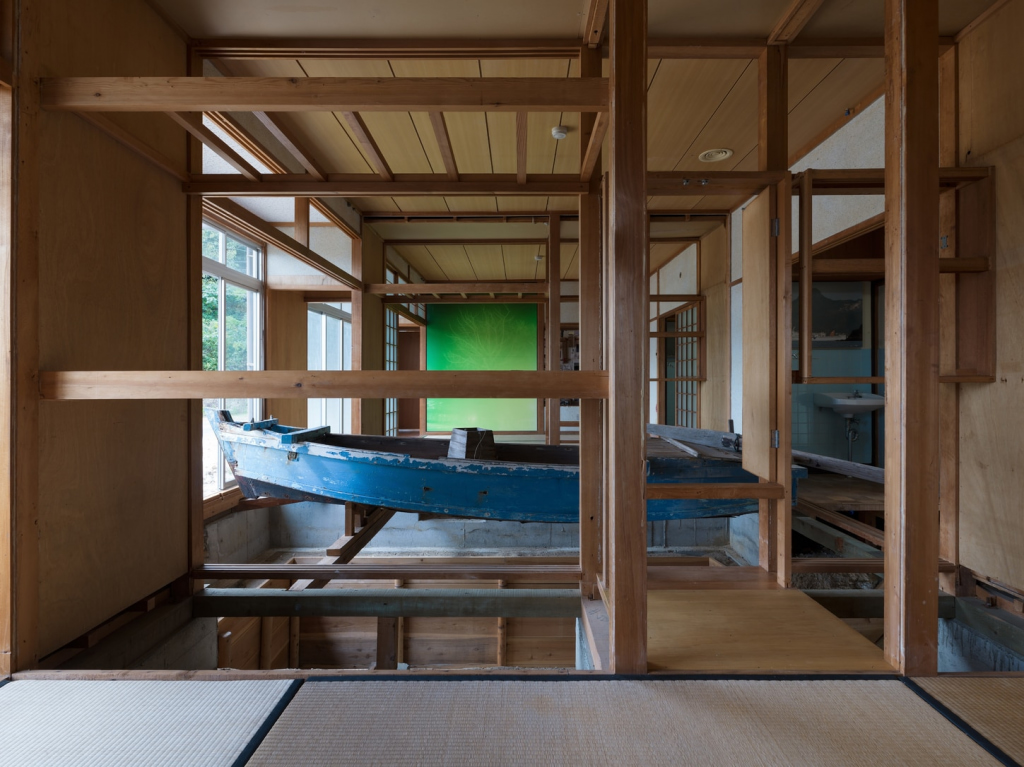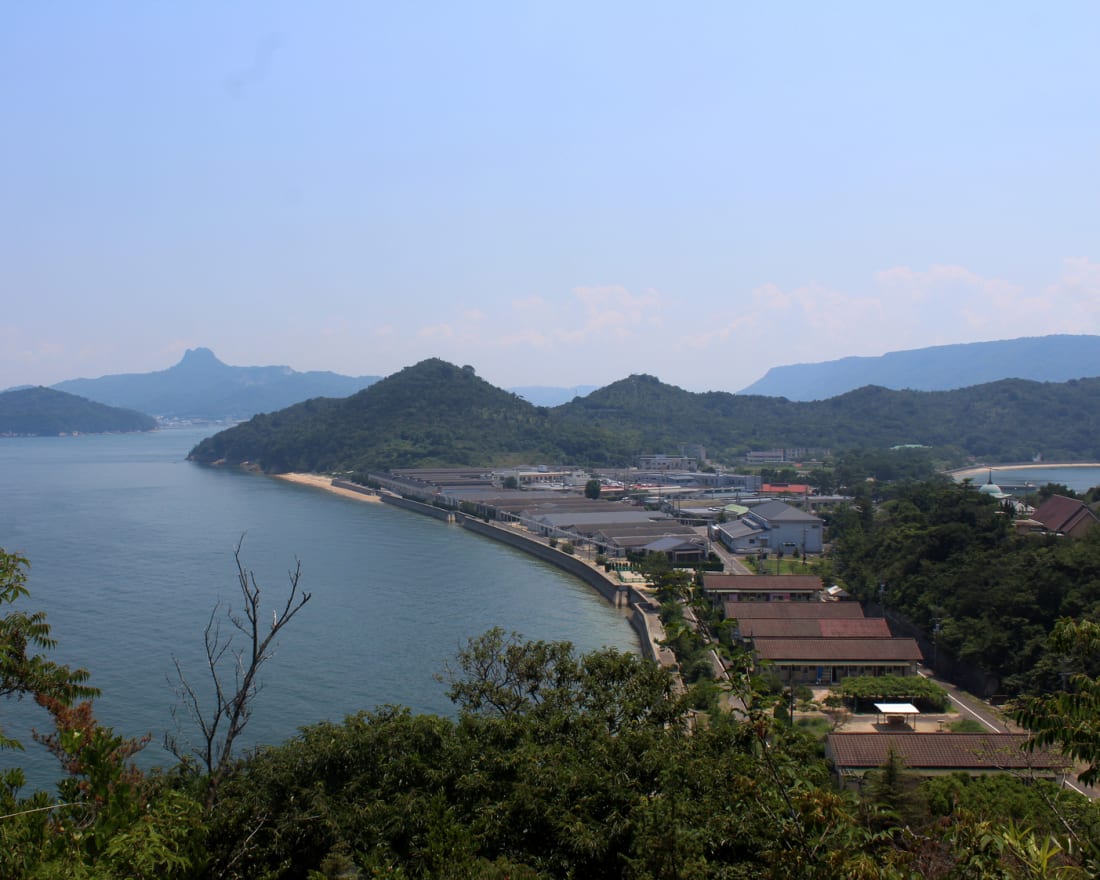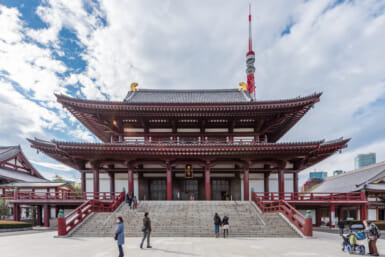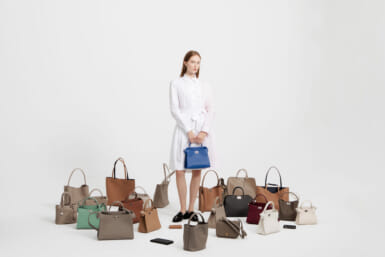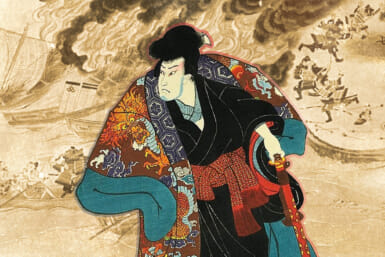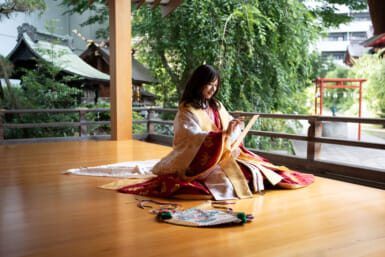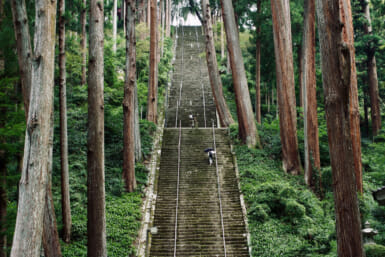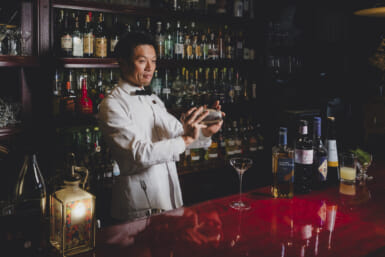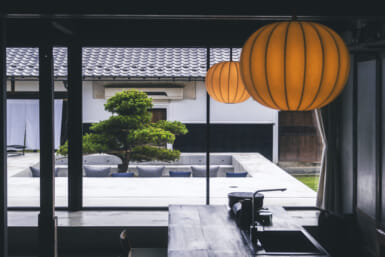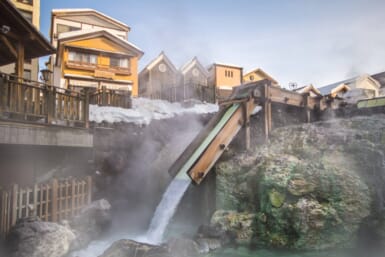Oshima, an idyllic art island existing in a lonely stretch of water on Japan’s Seto Inland Sea, has a reputation unlike any other. It is Japan’s only island leprosarium; an island inhabited almost entirely by lepers. Until recently, the island’s history has been shrouded in darkness. The Setouchi Triennale strives to shed a light on that murky past through inspired contemporary art.
The Island
I headed for Oshima on a blistering August afternoon during the Triennale’s summer season. From a distance the island was picture-perfect: pristine beaches bookended by wooded hills, a rocky pier stretching out from a long sandy cove and a shimmering seascape on all points of the compass.
But as I departed from the ferry, the sense of where I was, and what I was experiencing, underwent a dramatic shift.
The collection of buildings composing the leprosarium were squat, grey, uninviting – so starkly juxtaposed against their surroundings. The repetitive rhythm of an estranged xylophone tune crackled incessantly over speakers aligning the compound’s gravel walkways. It brought to mind a place where people in tact of their mental faculties, were sent to lose a hold of them.
Initially I felt a touch uneasy, like the remnants of the island’s leprotic past had manifested themselves into something more visceral. Even the word “leprosy” instils a kind of biblical fear – which probably didn’t help my state of consternation.
In retrospect, it is a testament to the artists and creators of the Triennale that they were able to turn this sensation entirely on its head.
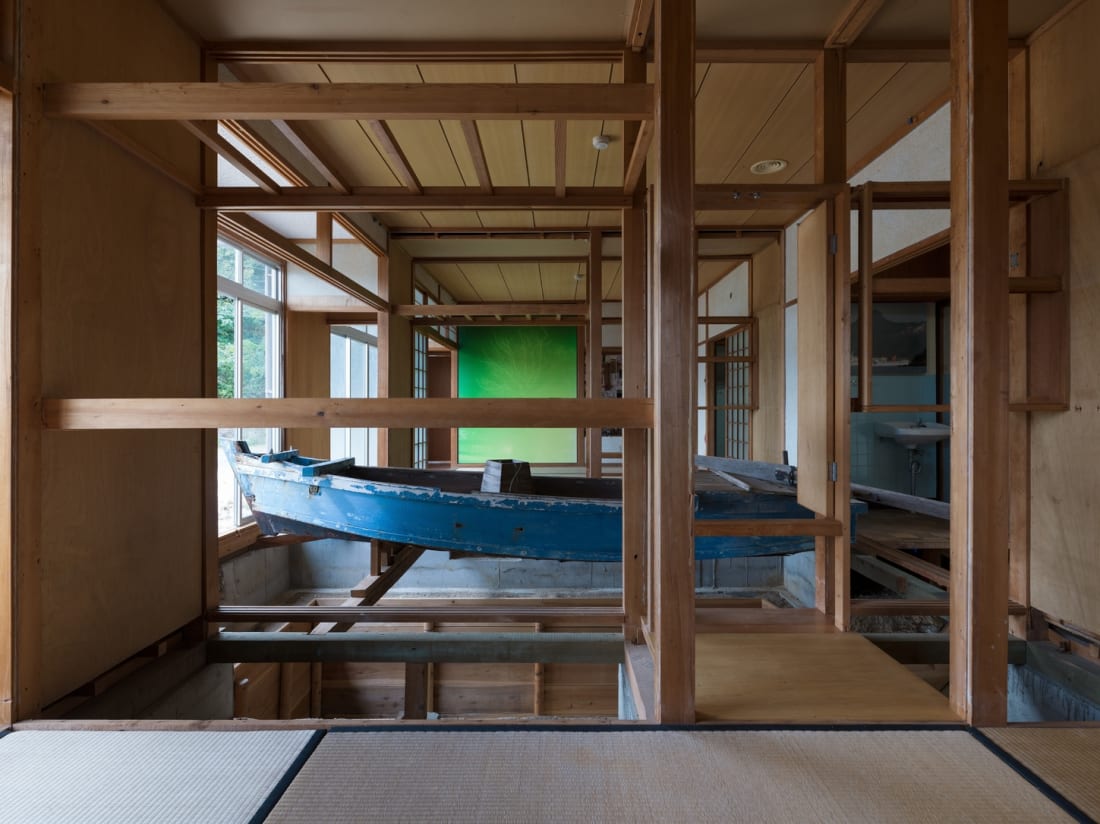
{Tsunagari no Ie}GALLERY15 “Sea Echo” | Artist: Art for the Hospital Project, Yasashii Bijutsu | Photo by Kimito Takahashi
The History
Oshima’s main sanitorium, a fairly large yet otherwise indistinct building, is typically the first port of call for those disembarking at the pier. A series of rooms detail a history of Oshima’s past through sepia-toned pictures, 3D models, jarring artworks and lengthy doses of information.
Oshima is one of several leprosaria in Japan, but the only one to be located on an island. It’s a strange irony that unfortunate victims of the disease are often confined to such stunning locales. Donald Richie surmised in the 1960s: “Lepers are often sent to beautiful places, as if in compensation for the ugliness of their disease… [Perhaps] being sent to places far away, they naturally live where the hand of man has not as yet completely destroyed natural beauty.”
The ailment – also known as Hansen’s disease – is caused by a no-longer-dormant bacterium that slowly eats away at the host body, causing facial disfigurement, deformities of the hands and feet, blindness and kidney failure (along with an increased susceptibility to myriad other maladies).
During the compound’s prime in the 1950s it hosted over 700 patients. The number has dwindled to 53 as of the time of this writing. It should be noted that leprosy is not a disease one contracts, yet something you just “get.” As such, the ostracization and subsequent treatment of lepers has come under a great deal of scrutiny. On Oshima, they were – in every sense – imprisoned.
The Triennale has only furthered the unleashing of Oshima’s lepers from the shackles of the past.
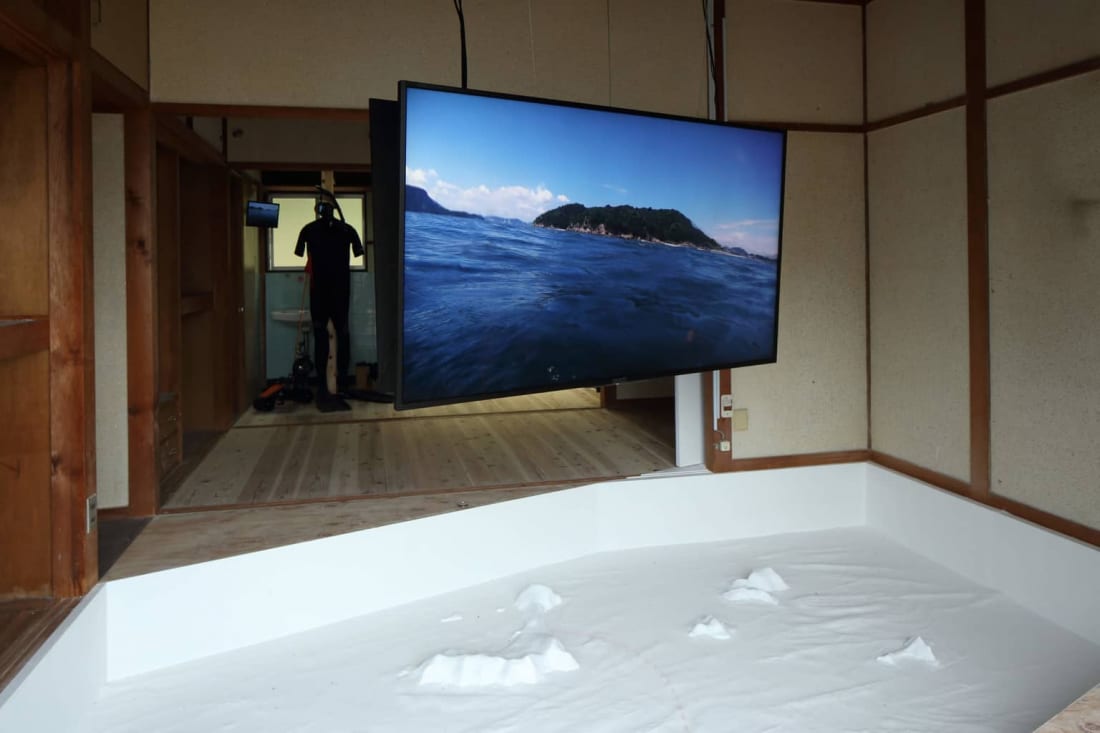
“Strait Songs” | Artist: Fuyuki Yamakawa | Photo by Keizo Kioku
The Art
Beyond the sanitorium confines is where Oshima begins to shine. The dark history slowly unravels, bringing visitors into, and beyond, the light at the end of the tunnel. No artwork better encapsulates this than Seizo Tashima’s “Life of N: 70 years on Oshima – A room with a wooden pot.”
Tashima met a resident of the sanitorium, known only as N, in 2012 during an event in Oshima. The two men, both originally from Kochi Prefecture, took an immediate liking to one another. Tashima was captivated by N’s story – from his arrival in Oshima as a child to the conditions he was subjected to under Japan’s policy of leper segregation (which was only officially disbanded in 1996). The artwork, now a permanent fixture on the island, is an homage to N’s life.
Inside the exhibit, a series of rooms filled with harrowing sculptures and quotes from N offer chronological insights into his life. The quotes talk of involuntary abortion, wretched living conditions and forced labor. It’s hard-hitting from the outset.
On stepping out of the shack however, I was greeted by a thriving garden patch of lush tomatoes basking in the sunshine. The miniature allotment belongs to N, and he faithfully tends to it to this day. “N is still alive and well,” my guide tells me. “So Tashima considers this artwork an honor to the island’s present, not it’s past.”
And Tashima isn’t alone in his inspiration. Eccentric young artist Fuyuki Yamakawa has several pieces dotted around the compound, including a video installation of the famous swim he made to a nearby island, mirroring the attempted – and often fatal – escape route of many of the former patients.
“Rare Feeler,” from Yasashii Bijutsu’s Art for the Hospital Project, is equally alive, showcasing the belongings, musings and poetry of lepers on the island who never gave up on life.
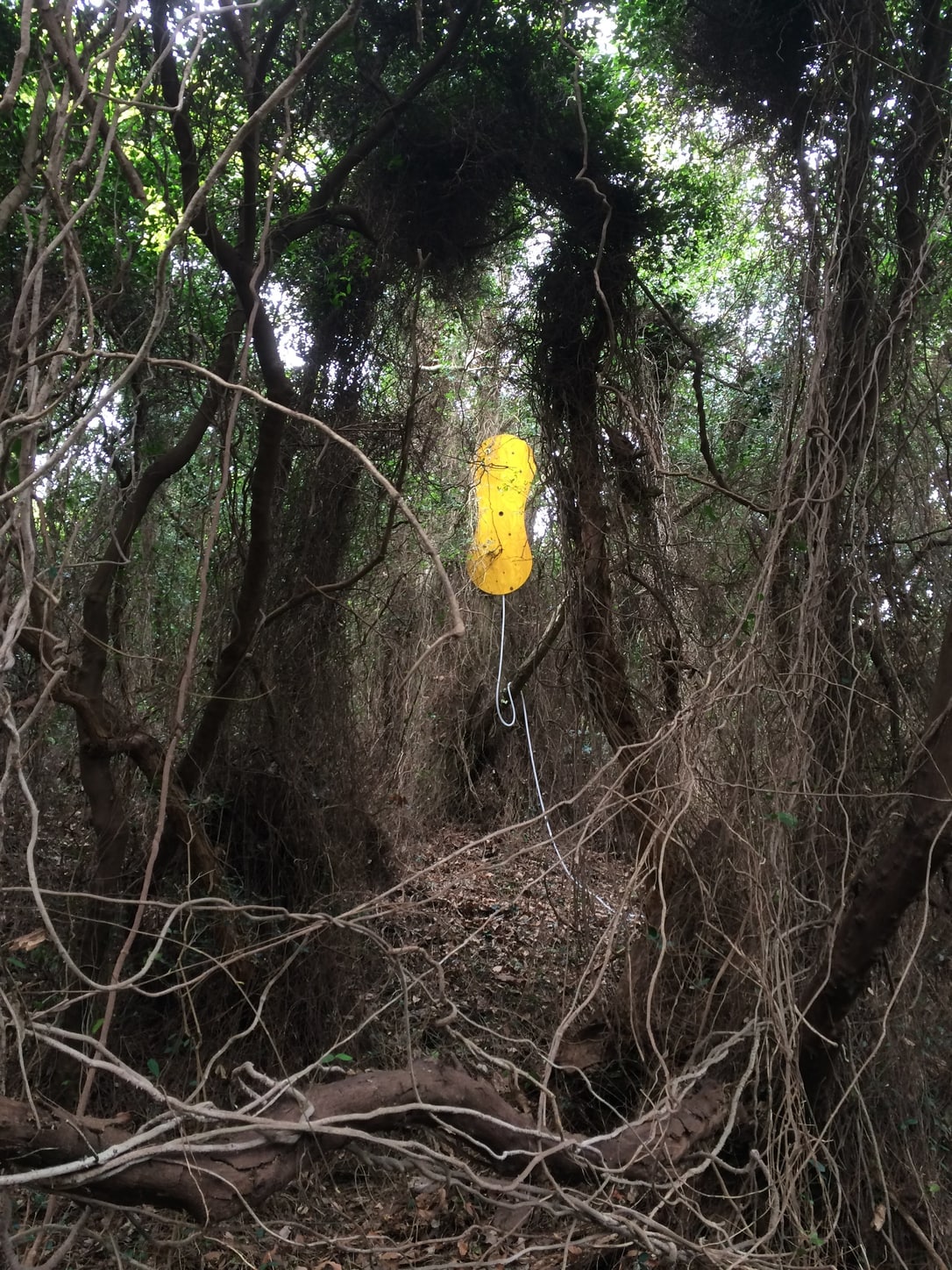
“Ringwanderung” | Artist: Tomoko Konoike | Photo courtesy of Tomoko Konoike
Full Circle
The final artwork I encountered, located beyond the compound, was “Ringwanderung” by Tomoko Konoike. The term, meaning “ring hike” in German, is used in hiking parlance to describe that sensation of being lost and walking around in circles; a sense that no doubt filled the heads of those enclosed within the walls of the leprosarium.
“Ringwanderung,” a circular and undulating hike around the hills of Oshima, ambled past some of the most majestic scenery the Seto Inland Sea has to offer. Towering tress spilled shadows across the leafy trail, and dense bamboo groves gave way to precipices casting their gaze upon the sapphire sea. Contrasting these fetching views, quotes from leprosy victims, placed intermittently along the trail, served as subtle reminders of where I was.
On finishing the hike – much like the trail itself – it felt like the story had come full circle. Oshima seemed to be reclaiming its natural roots, jettisoning the skeletons from its closet into the surrounding open sea. And though the island’s past should never be forgotten, its future certainly appears – for the time being at least – to be a little brighter.
The Setouchi Triennale takes place every three years, with a spring, summer and autumn edition. This year’s autumn edition is from September 28–November 4.

